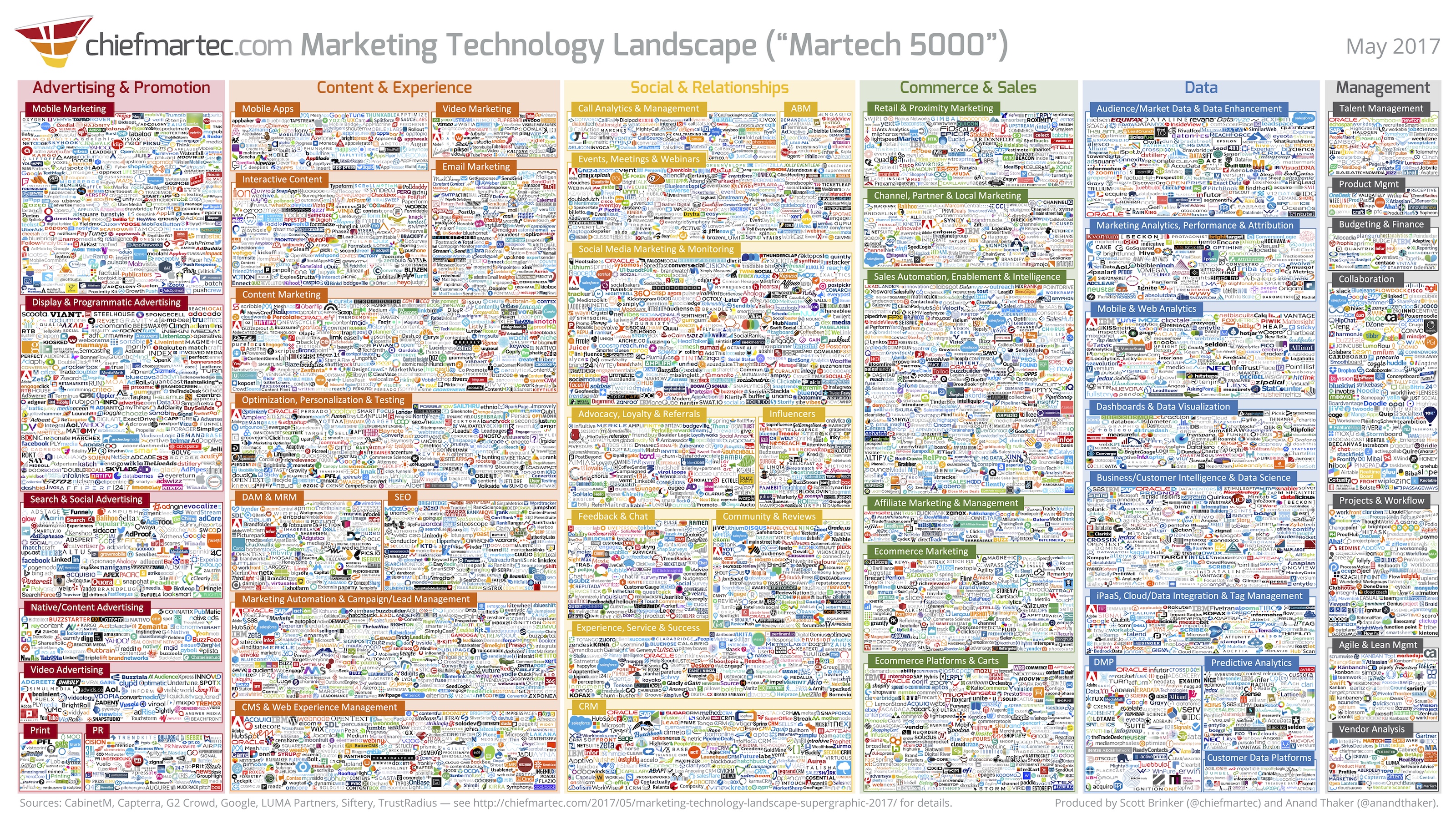A new graphic shows how crowded the digital marketing field has become – so what’s context got to do with it?
I started this blog post by looking at some new research from Martech with a somewhat critical eye.
Every year ChiefMartech.com releases its marketing technology landscape. The 2017 landscape looks like this:
What we see is a mass of names – 5,381 to be precise. Of that number, 4,891 are unique and that number has grown rapidly. This year’s figure is a rise of 40%. (It’s also worth considering that in 2011 there were just 150 names making up the landscape.)
At first, the graphic appeared as a total jumble to me. An unnecessarily large word cloud which functioned more like a niche version of Where’s Wally.
But the true value comes from the accompanying article and statistics – with insight into what people are actually talking about when you hear the phrase ‘context marketing’.
The value of influencers
One of the largest growth areas shown in the landscape is in the Social & Relationships category, particularly regarding Influencers and also Advocacy, Loyalty & Referrals.
Funnelling traffic from social media is big business – and it’s getting bigger. Social media increased its contribution to ecommerce referral by 200% between Q1 2014 and Q1 2015. But at the same time, many people are turning away from brand communications – 69% of consumers are unfollowing brands on social media.
Influencers offer a way through the noise. A trusted voice or familiar face can lend weight and validity to brand communications. When it works, it makes content more relevant for the people it’s aimed at.
In other words, it puts the content in the right context for the audience.
Context marketing
Effective marketing relies on getting your content in the right place at the right time for the right person. The growth of technology such as the Internet of Things means a number of new marketing channels are opened. Desktop and mobile are all well and good, but household goods offering up recommendations based on your searches, or smart vehicles directing you to the nearest garage, open up a host of new cans of worms.
Three questions will help you better understand the context in which your content will be consumed:
- Who is the person you’re talking to? (Age, demographic, location, interests)
- Where are they/Where can they be found? (Social media, trade publications, events)
- Who are the influencers for that audience? (Who the existing influencers are, what size following they have, what makes them a unique asset for your business)
So context marketing is not a new concept, but one as old as marketing itself. It means better understanding your audience – something all content marketers should be aspiring to anyway. And to navigate the increasingly busy waters, that means harnessing data and insight to help answer those three crucial questions.
But what about the Martech landscape? The graphic appears confusing and overly complicated but it also looks visually appealing. And that large scale reflects the rapid growth of the industry. It was certainly intriguing enough for me to click through and consume the stats and analysis showcased by the supergraphic.
It also successfully changed the focus of this blog from a criticism of a piece of content that missed the mark to the importance of knowing your audience. And that has to be a good example of successful, thought-provoking content.










